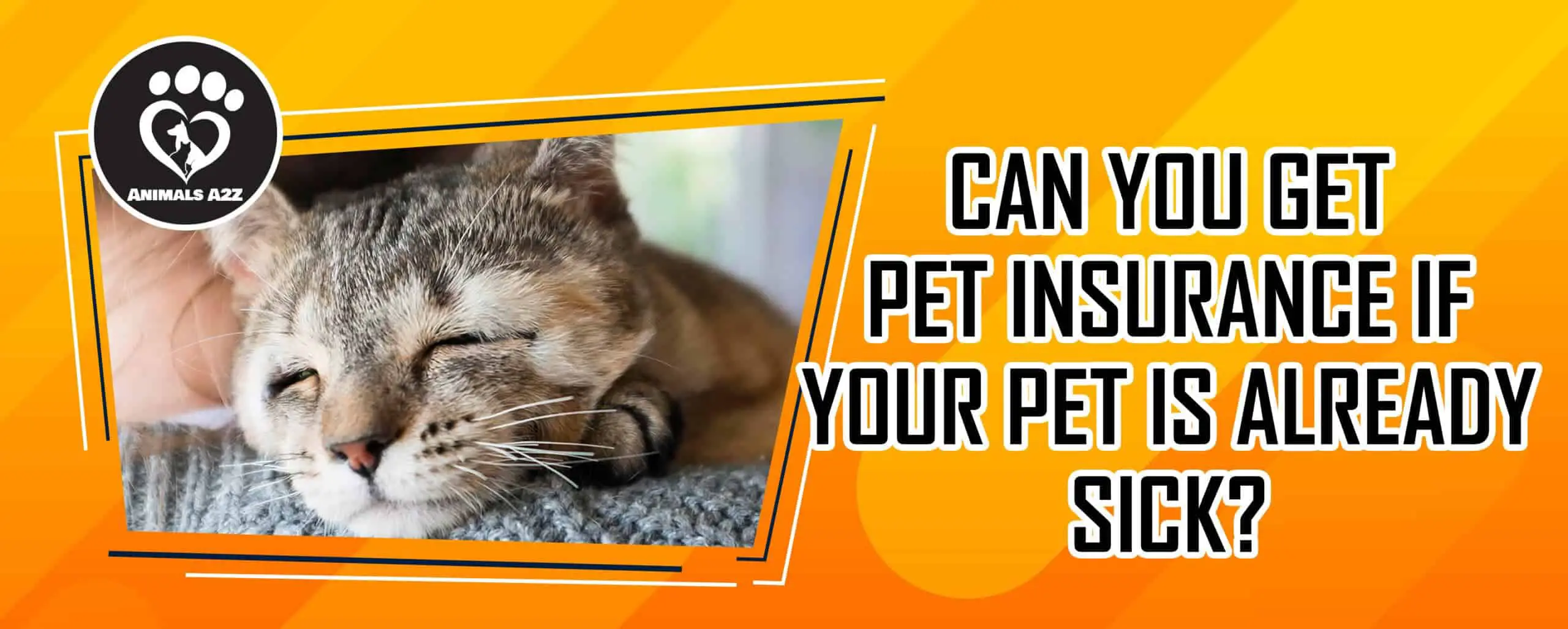When you decide to bring a pet into your life, it is never just a pet. They become a family member that you will love and cherish for the rest of their life. This is why it is important that you look after your pet and make sure they have the best care by taking them on regular trips to the vet and getting pet insurance for them.
You can get pet insurance for a pet when they are young, but also when they are older such as when you adopt an animal. But what happens if they have a pre-existing condition that affects them?
Most pet insurance policies won’t cover pre-existing conditions, but there are some specialist insurers that can help. Read on to find out what is classed as a pre-existing condition and what you can do if your pet has one.
Table of Contents
What is a pre-existing condition?
The definition of what a pre-existing condition is might vary between different insurance companies. However, most categorize a pre-existing condition as a condition that started or showed symptoms before the insurance policy was taken out for the pet.
Some define a pre-existing condition as a condition that has the same diagnosis that a pet had before the policy was bought. Another definition is a condition that occurred because of an illness or injury that the pet had before the insurance policy was taken out.
Our top3 cat insurance providers
PetPlan - Start quote
Eusoh - Start quote
Petsbest - Start quote
Average monthly cost for cat insurance average between $20 for kittens and $100 per month for older cats. Remember to always get quotes from more than one provider!
Most insurance companies have a 14-day waiting period once a policy is taken out. If your pet experiences symptoms in the first two weeks, it will be classed as a pre-existing condition.
What determines if a condition is pre-existing?
If the condition or symptoms started before the pet insurance plan was effective, it would be considered a pre-existing condition. For example, if you adopted an older pet and were made aware of an issue it had, you couldn’t claim insurance for it.
Some pre-existing conditions are curable, and some are incurable. Some examples of incurable conditions are diabetes, allergies, heart disease, arthritis and cancer. These are often lifelong and would cost a lot for insurance to cover.
A curable condition is one that can be resolved completely and are eligible for coverage once cured. Examples of curable pre-existing conditions are vomiting, UTIs, ear infections, diarrhoea and upper respiratory infections.
Most insurance companies will have a list of pre-existing conditions that they won’t cover so you can be sure when applying.
Why pre-existing conditions are a problem
The reason why insurance companies won’t cover a pre-existing condition is that the pets will be seen as a risky investment. It will be expensive to cover their treatment and it isn’t always guaranteed that they will live for that long.
Some conditions can also lead to other problems in the future which insurance companies will have to pay for.
If you buy or adopt a pet that has a pre-existing condition, you might find it difficult to insure them. Most insurance companies just don’t want to take the risk. However, there are some companies that specialise in offering insurance to pets with pre-existing conditions.
The policies they offer will be more expensive, but it would be worth it to know your pet is covered.
What to do if your pet has a pre-existing condition
If your pet has a pre-existing condition, then you will need to shop around more when it comes to finding an insurance company. Sites that compare pet insurance can be helpful in finding you a company that covers pre-existing conditions.
An insurance company that covers pre-existing conditions will often allocate a certain amount to the conditions in the first year of the policy. This is because some chronic conditions will only flare up every so often and might not need constant treatment.
Some policies will cover a pre-existing condition if the pet has been free of symptoms for a certain number of months, typically three or six.
Always be sure to read the conditions of an insurance policy carefully to make sure you’re choosing the right insurance for your pet.
Frequently Asked Questions about Pet Insurance for Pre-Existing Conditions
What are the most common medical conditions for cats and dogs?
Some conditions can be expensive to treat, so it helps to know what the most common are and how much they cost to cure.
According to Pet Assure, the most common medical conditions for a dog were the following:
- Allergic or atopic dermatitis – $255
- Otitis externa – $172
- Benign skin neoplasia – $377
- Tooth infection – $400
Cats often suffer from similar conditions, as well as the following:
- Urinary Tract Disease – $495
- Gastropathy – $334
- Renal disease of failure – $649
- Diabetes mellitus – $889
How does an insurance company know if an adopted pet has a pre-existing condition?
Insurance companies will often request medical records for a pet when the first claim is submitted. Once the records from the veterinary and adoption centre are in their possession, they will figure out if a condition counts as pre-existing. This will depend on when the condition was noticed and if the pet has received any treatment recently.
Is a hereditary condition classed as pre-existing?
Hereditary conditions are genetic, meaning that they affect certain pedigree or pure-breed animals. These conditions are passed down from the parent to the infant and is sometimes caused by inbreeding. An example of a hereditary condition is hip dysplasia, which can be common in German Shepherds and Dobermans.
Most insurance companies will cover hereditary issues, but they’re more likely to do so if a policy is taken out before symptoms occur.
Always look out for your pet
Even if your pet has a pre-existing condition, it is important that you look out for them and make sure they are insured. It will cost more to insure them than a regular, healthy pet, but it will be worth it. That way you don’t have the burden of paying for all their treatment.
Be sure to shop around and find the best insurance deal that suits you and your pet.


